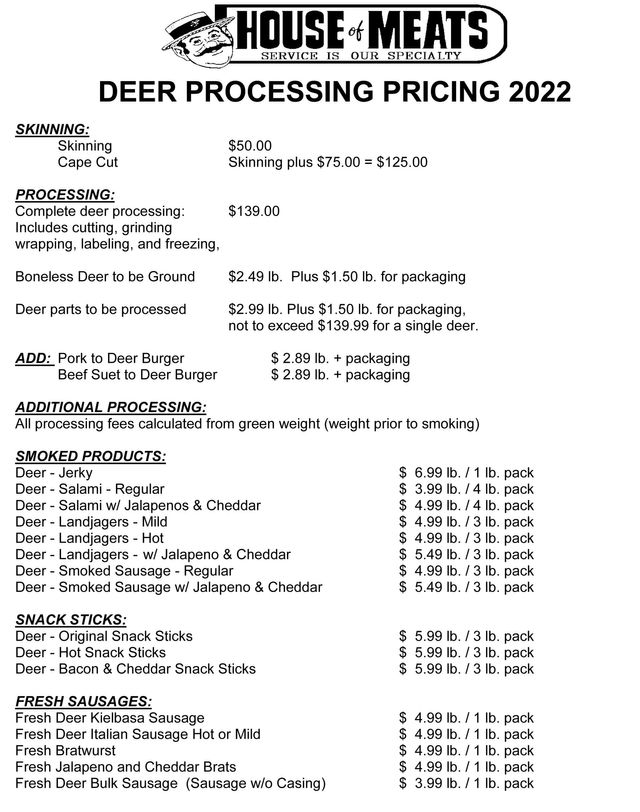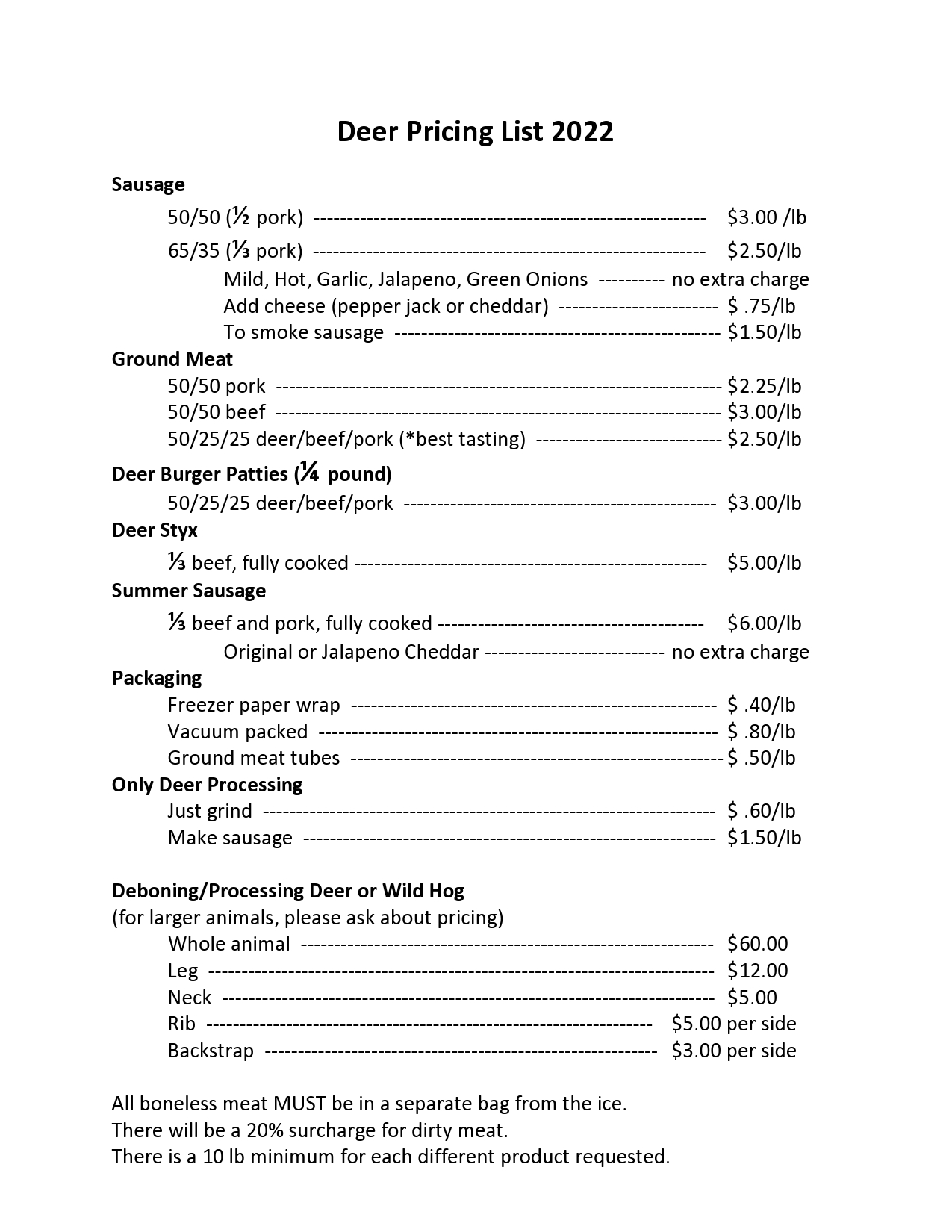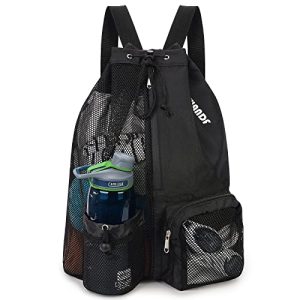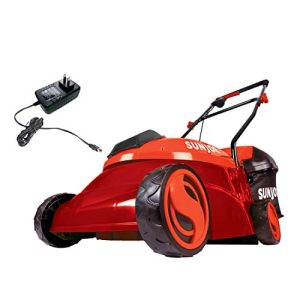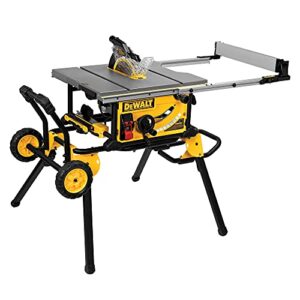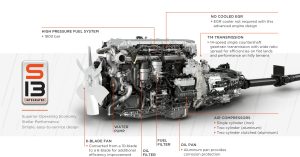Contents
- Factors Affecting the Cost of Deer Processing
- Average Cost of Deer Processing
- Additional Considerations for Deer Processing Cost
- Comparison of Deer Processing Costs at Different Facilities
- Tips for Saving Money on Deer Processing
- Quality vs. Cost: Finding the Right Balance
- Hidden Costs to Be Aware of
- Common Misconceptions About Deer Processing Costs
- Understanding the Economic Impact of Deer Processing
- Conclusion
If you’re an avid hunter, then you know that the thrill of the chase doesn’t end once you’ve bagged a deer. The next step is deer processing, which involves transforming the animal into various cuts of meat. But have you ever wondered how much this service actually costs? In this article, we’ll explore the ins and outs of deer processing and provide you with a comprehensive breakdown of the expenses involved. So, if you’re curious about the financial aspect of turning your hunt into a delicious feast, read on to discover the true cost of deer processing.
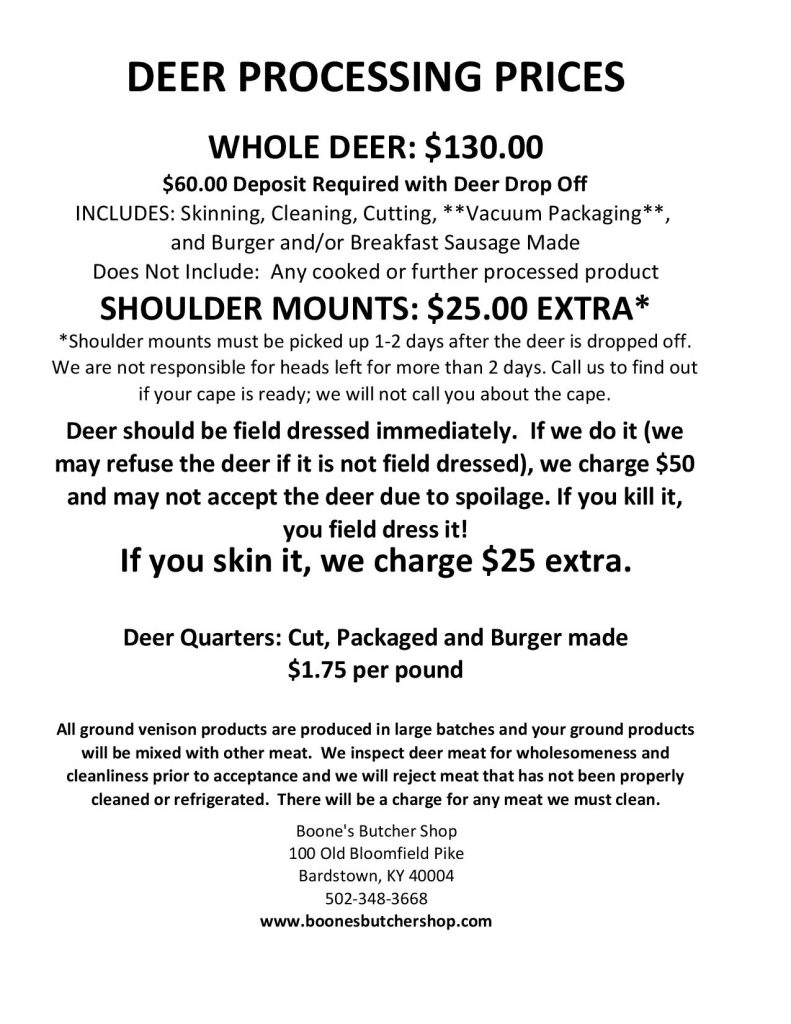
Factors Affecting the Cost of Deer Processing
Quality of the Processing Facility
The quality of the processing facility you choose can greatly impact the cost of deer processing. Facilities that are well-equipped, maintain high standards of hygiene, and employ skilled butchers are likely to charge higher prices. However, the assurance of quality is worth the extra cost, as it ensures that your venison will be handled and processed professionally.
Location of the Processing Facility
The location of the processing facility can also affect the cost of deer processing. Rural areas may have lower operating costs, allowing them to offer more competitive prices. On the other hand, facilities located in urban or high-cost areas may charge higher fees due to increased overheads, such as rent and wages.
Type of Deer Processing
The type of processing you opt for will have an impact on the cost. Basic processing, which typically includes field dressing, skinning, and quartering, is usually the most affordable option. Additional services like the production of specialty cuts, sausages, or jerky will result in higher processing fees.
Weight of the Deer
Deer processing costs are often based on the weight of the deer. Most processing facilities charge per pound, with prices varying based on the region and the specific services required. It’s important to inquire about the cost per pound and any minimum weight requirements when selecting a processing facility.
Cutting and Packaging Options
Different cutting and packaging options can add to the overall cost. Basic options such as boneless steaks and ground venison are typically included in standard processing fees. However, if you prefer specific cuts or unique packaging, such as vacuum-sealed portions or specialty freezer packs, you may incur additional charges.
Average Cost of Deer Processing
Basic Processing Costs
Basic processing costs for deer typically range from $80 to $150, depending on the region and processing facility. These costs usually cover field dressing, skinning, quartering, and basic cuts like steaks and ground venison. Keep in mind that these prices can vary, and it’s essential to check with local processing facilities for accurate pricing information.
Additional Charges for Specific Cuts
If you desire specific cuts, such as tenderloins, backstraps, or rib racks, expect to pay additional charges. The prices for these cuts can vary depending on the facility and the region, but they generally range from $10 to $30 per pound. These specialty cuts are often in high demand and require more labor-intensive processing, resulting in higher prices.
Extra Charges for Specialized Services
Aside from specific cuts, some processing facilities offer specialized services like the production of sausages, jerky, or deer bacon. These services usually come at an additional cost, as they require additional ingredients, processing time, and expertise. Prices for specialized services can range from $3 to $10 per pound, depending on the type of product and the processing facility.
Additional Considerations for Deer Processing Cost
Seasonal Price Variations
It’s worth noting that deer processing costs may vary throughout the year. During the peak hunting season, processing facilities might charge higher fees due to increased demand and limited capacity. Conversely, some facilities may offer discounted rates during the offseason to attract customers. Consider the timing of your deer processing to take advantage of potential cost savings.
Customization Options and Fees
Facilities that offer customization options, such as specific seasoning blends or marination, may charge extra fees for these added services. While these options can enhance the flavor and overall experience of your venison, be aware that they may come at an additional cost. Inquire about customization options and associated fees beforehand to avoid any surprises on your bill.
Rush Processing Fees
If you are in need of a quick turnaround time for your processed deer, some facilities may offer rush processing services. However, these expedited services usually come with additional fees. If time is of the essence, be prepared to pay a premium for faster processing.
Comparison of Deer Processing Costs at Different Facilities
Local Butcher Shops
Local butcher shops are often a popular choice for deer processing. They provide personalized service, high-quality processing, and a chance to support local businesses. While prices may vary among different shops, they often offer competitive rates, especially in rural areas. It’s advisable to inquire about their processing fees, customization options, and turnaround times to find a shop that meets your needs and budget.
Large-Scale Processing Facilities
Large-scale processing facilities are another option to consider. These facilities generally have greater capacity, allowing them to process larger volumes of deer efficiently. While they may lack the personalized touch of a local butcher shop, they often offer cost-effective processing options due to their economies of scale. Research facilities in your area, compare their rates, and assess customer reviews to make an informed decision.
Do-it-Yourself (DIY) Processing
For those looking to save money or enjoy a hands-on experience, DIY deer processing is an alternative worth considering. DIY processing involves field dressing, skinning, and butchering the deer yourself. While this can be time-consuming and requires some level of skill, it allows you to have complete control over the processing process. Keep in mind that DIY processing comes with additional costs for equipment, such as knives, a meat grinder, and packaging materials.
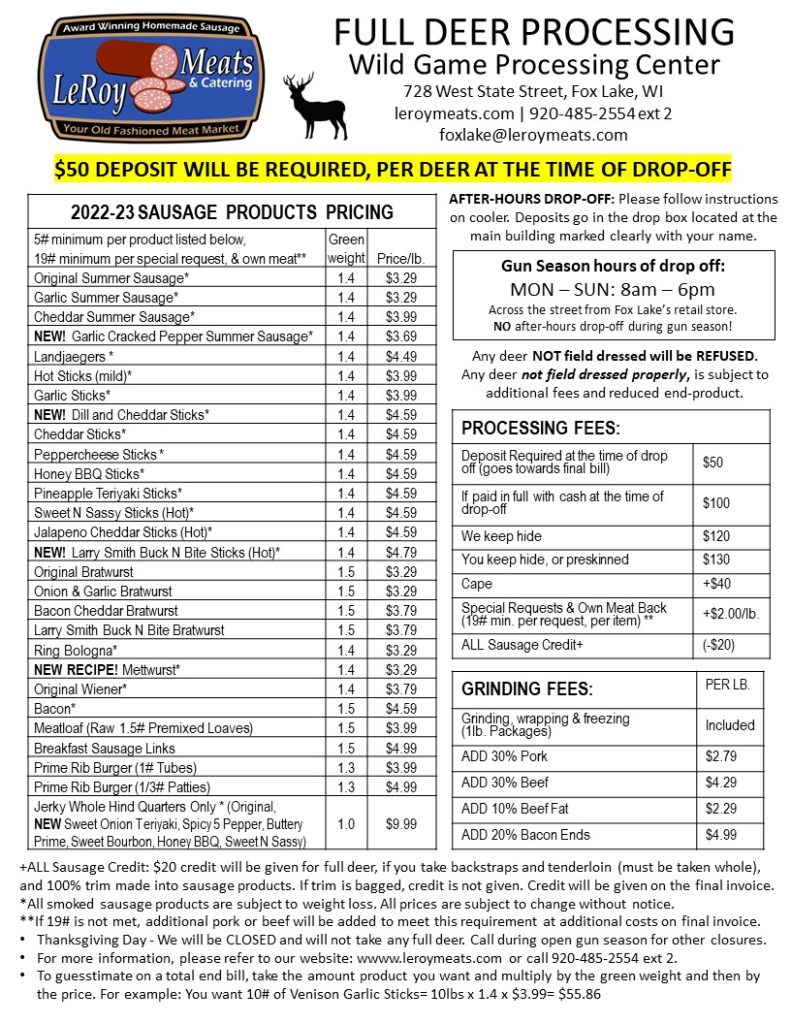
Tips for Saving Money on Deer Processing
Consider DIY Processing
As mentioned earlier, DIY processing can be a cost-effective option if you are willing to invest time and effort. By learning the proper techniques and purchasing the necessary equipment, you can save on processing fees and have full control over the quality of your venison.
Share Costs with Hunting Partners
If you have hunting partners who also wish to process their deer, consider pooling your resources. Sharing the cost of equipment, such as grinders or vacuum sealers, can help reduce individual expenses. Additionally, processing multiple deer at once may allow you to negotiate discounted rates with processing facilities.
Shop Around for the Best Prices
Take the time to research and compare prices at different processing facilities. Prices can vary greatly, so it’s beneficial to contact multiple facilities and inquire about their rates, services, and any additional fees. By doing so, you can identify the most affordable option that meets your specific processing needs.
Utilize Promotions and Discounts
Keep an eye out for promotions and discounts offered by processing facilities. Some may offer early bird specials or discounts for processing multiple deer. Additionally, check if there are any coupons or loyalty programs available for repeat customers. Taking advantage of these promotions and discounts can help you save money on deer processing.
Consider Processing Your Own Venison
If you have the necessary knowledge, skills, and equipment, processing venison at home can provide substantial cost savings. By mastering the art of butchery and investing in the appropriate tools, you can enjoy the satisfaction of processing your own deer while keeping expenses to a minimum.
Quality vs. Cost: Finding the Right Balance
Weighing the Importance of Quality
When considering the cost of deer processing, it’s important to strike a balance between quality and cost. While it’s tempting to prioritize cost savings, compromising on quality can result in dissatisfaction with the final product. Paying slightly higher prices for a reputable processing facility can ensure that your venison is handled professionally and meets your expectations in terms of taste and texture.
Considering Budget Limitations
However, it’s equally essential to consider your budget limitations. Evaluate how much you are willing and able to spend on deer processing. By setting a budget and exploring cost-effective options, you can find processing facilities that offer a balance of affordability and quality.
Researching Customer Reviews
To gain insight into the quality and reputation of different processing facilities, it’s helpful to research customer reviews. Online platforms, such as review websites or forums, provide valuable feedback from other hunters and customers. Look for facilities with consistently positive reviews regarding both their processing techniques and the flavor of their venison products.
Seeking Recommendations
Another way to ensure you are getting both quality and fair pricing is to seek recommendations from hunters or friends who have had positive experiences with specific processing facilities. People who have firsthand knowledge can provide valuable insights into the expertise, efficiency, and customer service provided by different facilities.
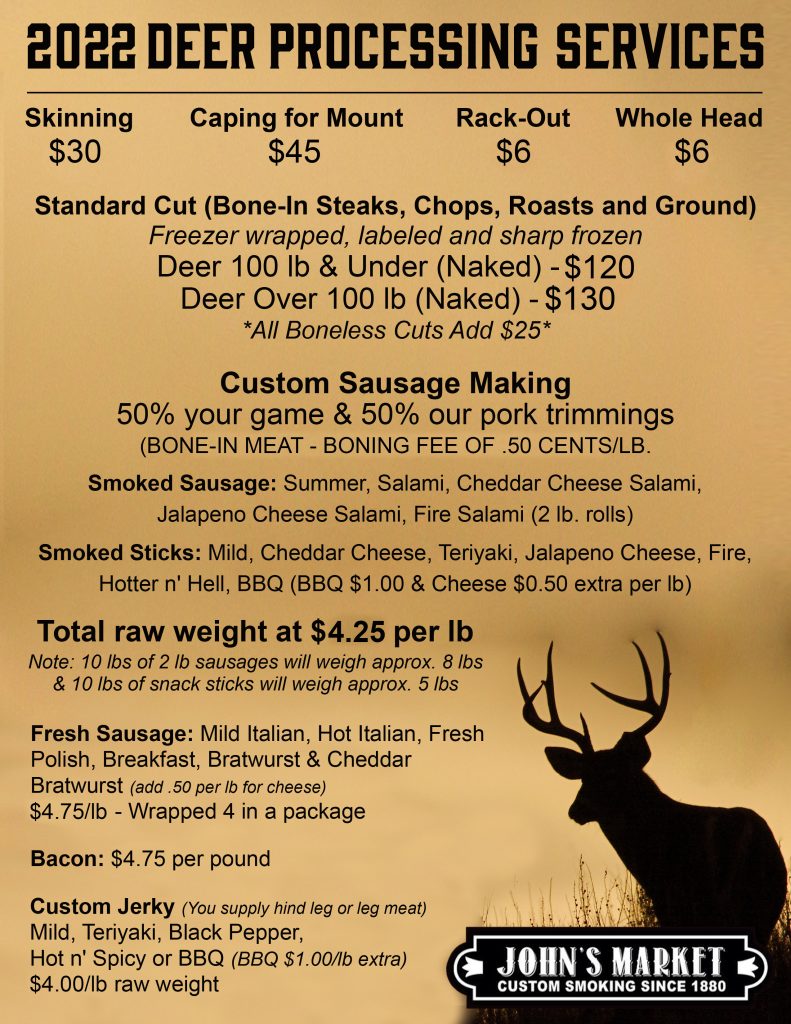
Hidden Costs to Be Aware of
Evaluation Fee
Some processing facilities may charge an evaluation fee. This fee is typically applied when evaluating the condition of your deer to determine if it is suitable for processing. While not all facilities charge this fee, it’s essential to inquire about any potential evaluation fees before committing to their services.
Additional Fees for Specific Requests
If you have specific requests that deviate from the standard processing options, such as specialized cuts or packaging, be prepared to pay additional fees. Processing facilities have set procedures and pricing for their standard services, but additional requests often come at a cost.
Packaging and Storage Costs
While basic packaging, such as freezer paper or plastic bags, is usually included in the processing fees, some facilities may charge extra for premium packaging options. If you prefer vacuum-sealed or specialty freezer packs, expect to pay an additional amount. Additionally, if you wish to store your processed venison for an extended period at the processing facility, inquire about any associated storage fees.
Common Misconceptions About Deer Processing Costs
Processing Prices Are Standardized
Contrary to common misconception, deer processing prices are not standardized and can vary significantly. Each processing facility sets its own pricing structure based on factors such as location, services provided, and operational costs. It’s important to gather information from multiple facilities to accurately compare prices and find the most suitable option for your needs and budget.
Deer Processing Is Always Expensive
While some processing facilities may be costly, there are affordable options available. As discussed earlier, local butcher shops or DIY processing can provide more budget-friendly alternatives. By exploring different options and considering the factors that affect cost, you can find a solution that aligns with your financial situation.
Do-It-Yourself Processing Is Always Cheaper
While DIY processing can be cost-effective in the long run, it’s not always the cheapest option upfront. DIY processing requires initial investments in equipment, such as knives, grinders, or meat slicers. These upfront costs should be considered alongside the time and effort required for processing. It’s essential to assess your own skills, access to equipment, and the value of your time before opting for DIY processing solely based on cost.
Low-Cost Processing Means Lower Quality
Price alone does not determine the quality of deer processing. There are processing facilities that provide high-quality services at affordable prices. By researching customer reviews, seeking recommendations, and examining the reputation of different facilities, you can find reasonably priced options without compromising on quality.
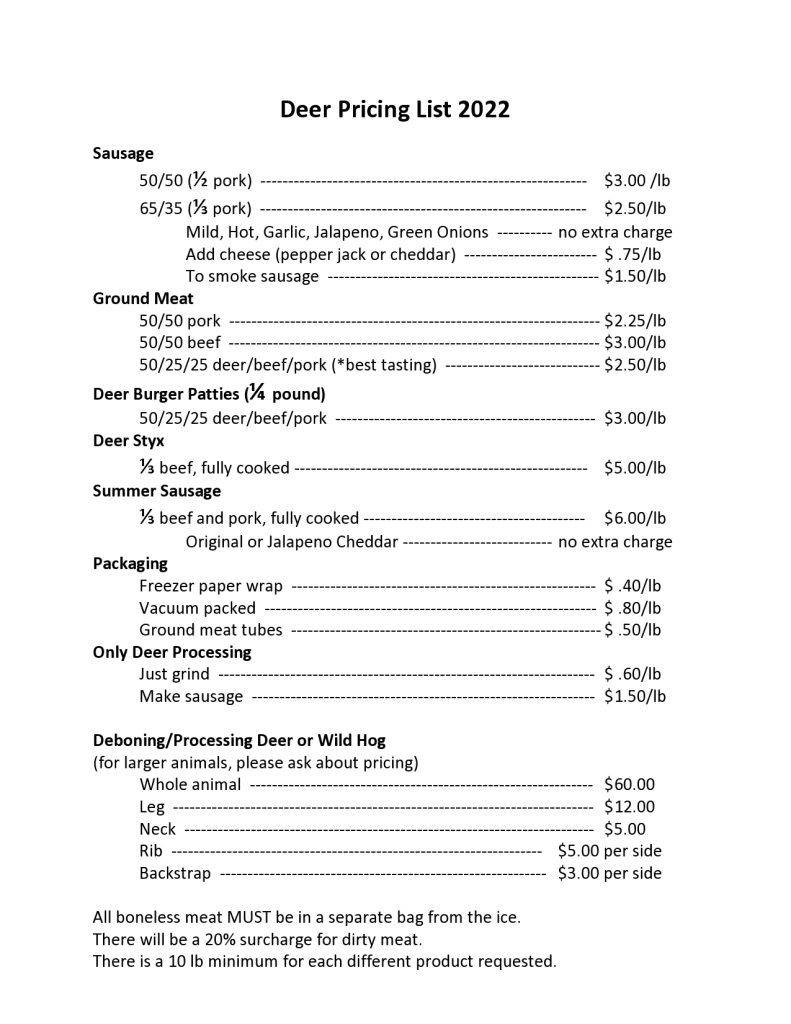
Understanding the Economic Impact of Deer Processing
Income for Processing Facilities
Deer processing provides a source of income for processing facilities. These establishments rely on the fees they charge for their services to support their operations and pay their employees. By utilizing their services, you contribute to the economic sustainability of these facilities.
Contributions to Local Economies
Local processing facilities contribute to the local economy by providing employment opportunities and creating a demand for related services and products. The revenue generated by these facilities circulates within the community, supporting other small businesses and stimulating economic growth.
Job Creation
The deer processing industry creates jobs, ranging from butchers and meat processors to administrative staff and maintenance personnel. These job opportunities provide income and stability for individuals within the local community, contributing to overall economic well-being.
Support for Hunting Industry
Deer processing facilities play a critical role in supporting the hunting industry. By providing professional processing services, these facilities ensure that hunters can fully utilize the game they harvest. This support encourages and enables hunting activities, which contribute not only to recreational pursuits but also to wildlife management and conservation efforts.
Conclusion
Understanding the factors that affect the cost of deer processing is crucial for hunters looking to make informed decisions about where to have their game processed. By considering the quality of the processing facility, the location, the type of processing required, the weight of the deer, and the cutting and packaging options, hunters can evaluate the prices charged by different facilities and find one that meets their needs and budget. It’s important to remember that quality should not be compromised for cost savings, and striking a balance between affordability and expertise is key. With careful research, consideration of hidden costs, and exploration of money-saving tips, hunters can enjoy the benefits of professionally processed venison while supporting the local economy and the hunting industry as a whole.
